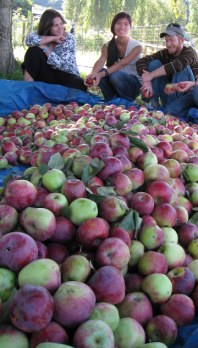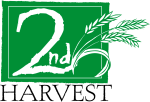To succeed in retaining well-meaning volunteers or donors you must be able to demonstrate the necessity of their participation by connecting them with a problem that has a mutually beneficial solution.
In the development of a PAR program those solutions may look like this:
 Community Garden: The local parks department has an incentive to decrease maintenance costs (mowing) in neighborhood parks and increase park usage. The PAR program incentive is to decrease hunger in the community by increasing access to garden produce. The mutually beneficial solution is to work with the Parks Department and interested gardeners to create a community garden in the park maintained by volunteers with a portion (1-100 percent) of the produce donated to local food pantries.
Community Garden: The local parks department has an incentive to decrease maintenance costs (mowing) in neighborhood parks and increase park usage. The PAR program incentive is to decrease hunger in the community by increasing access to garden produce. The mutually beneficial solution is to work with the Parks Department and interested gardeners to create a community garden in the park maintained by volunteers with a portion (1-100 percent) of the produce donated to local food pantries.
School Garden: The school district Nutrition Services Director has an incentive to increase the nutritional quality of meals provided which will largely be achieved through increased fresh fruit and vegetable consumption. This goal has been proven to be more easily achieved when students have a better connection to where food comes from and how it is grown. Again, a school garden can mesh with PAR incentives when the garden is donating a portion of their harvest to the local food bank. The positive externalities of a solution of this kind can be amazing.
Nutrition Education: Partnering with the Benton/Franklin Health Alliance in the Tri-Cities led to a partnership between local food pantries and nursing students in need of clinical hours. This partnership exposes future health professionals to the difficulty of meeting nutritional needs with limited food access while fulfilling requirements of the Community Health class. This arrangement requires little from the food bank’s volunteers or management, other than coordinating when the students may interact with clients and providing insight as the students develop ways to provide effective nutrition education.
These programs in turn provide excellent publicity opportunities for PAR promotion. Whatever solutions you may find in your community, you cannot forget who your efforts are meant to be benefitting and not lose focus on what they truly need. This may require surveys or other methods of gathering this information. Maybe they would like to grow their own food and could use help obtaining materials or the knowledge to do it successfully. Perhaps the client has access to sufficient fresh produce during the summer months but not through the winter. What if they can’t get their kids to eat the vegetables? When you are able to address a clearly defined problem it becomes much easier to find solutions by building strategic partnerships which are mutually beneficial and sustainable.

 Community Garden
Community Garden